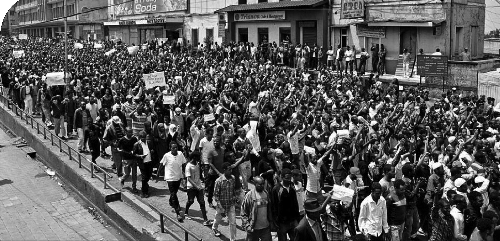
Most scholars second the idea that conflict is a pathological order. According to the East Africa Policy Research Institute’s (EAPRI) study paper, Ethnic struggle and conflict are normal and common phenomena in plural democracy. It is not necessarily violent and could be seen as a bargaining mechanism between competing groups over resources.
In the Marxist language, it is a milestone for social change. Marx and Engels argued that the history of all hitherto existing society is the history of class struggles. Freeman and slave, patrician and plebeian, lord and serf, guild-master and journeyman, in a word, oppressor and oppressed, stood in constant opposition to one another, carried on an uninterrupted, now.
Regarding the withdrawal of Ethiopia from ethnic bunker, the study paper written by Berhanu Lenjiso indicates that many writers argued against the possibility of ethnic conflict in Ethiopia. The Ethiopian identity shows a general pattern of fragmentation. As such the multiple axis of identification have means that the different ethnic groups have had their lives intersect one with another in overlapping and complex circles of identity construction and rejection.
The shape and edge of Ethiopian identity is historically changing, often vague and to a degree malleable. The fact that the Ethiopian people have intermarried and intermingled, share religion and other social identities, and that there is no significant disagreement between people reduce the chance for ethnic conflict in the country.
Specially, in a context where religion and ethnicity crosscut each other, one’s identity cross-connect, while the other divide people. This cross-connecting identity will create a bridging social capital and that reduces the chance for binary division. Therefore, this strong social fabric in the country can tackle the perils of communities withdrawing into ethnic bunker in Ethiopia.
Concerning the ulterior motive design behind the existing ethnic conflict, the study paper remarked that one can easily arrive at a conclusion that there is no sound logical ground for ethnic conflict in Ethiopia.
Moreover, the concept of ethnic conflict by itself is weak and unclear. But politicians rarely look for sound logical grounds or rely on analytical skills for decision-making in Ethiopia.
In most cases, political decisions are informed by ulterior motives. In almost all political decisions there are certain lurking variables that are invisible to the Ethiopian people. On a recent ethnically framed proxy war between the Oromo and the Ethiopian Somali, René Lefort wrote the following: “as if one fine morning, for no particular reason, a few overexcited Oromos had decided to turn on their Somali neighbors, and vice versa, to act out an ancient and unresolved “ethnic conflict”.
This account of things has one essential outcome: these events are attributed to ancestral tribal urges, responsibility for them to unstable locals, and the regional or federal authorities are ultimately exonerated from all responsibility other than their failure to contain the violence hidden, now open fight, a fight that each time ended, either in a revolutionary re-constitution of society.
Religious scholars argue that evil lies dormant in the human soul, and it can be fanned in to a flame by the most ordinary human passions: the passion for power, for wealth, for a good for self and family. This is the ulterior motive that lies under the ethnic conflict mantra in Ethiopia.
“The roaring we have been hearing from the northern tip of the country recently is a clear manifestation of this same motive. The deep passion for power and wealth is boiling.
Although there is little to no logic or analytics behind this passion-driven roaring, it does not mean the chance for the community to withdraw into an ethnic bunker is zero.” Berhanu added.
His paper underscored that the group that has framed and used the ethnic conflict and Genocidal narrative for over two decade won’t easily stop pushing it. They, in fact, have always justified the one party domination on the ground that Ethiopia is too potentially fractious, too ethnically diverse, to withstand strains.
Therefore, it is likely that they will continue to design for collective madness in the country to prove their thesis correct and to ensure their ulterior motive. But the Ethiopian people are also aware enough about the potential ethnic games. They have overplayed the same card and the people have seen the wind multiple times. “But now, I earnestly hope that the Ethiopian people have learned enough to reverse the looming danger.”
About the way forward to do list measures, the study paper opts for ethnic denaturalization as a lasting solution for the threat of ethnic conflict in Ethiopia. Others suggest partitioning the country into ethnically homogenous self-governing groups. But both groups ignored the actual underlying potential cause for ethnic conflict in Ethiopia.
There are at least two major lurking variables behind potential ethnic conflict. The first one is injustice. By ensuring justice, freedom and equality, it is possible to eliminate the danger of ethnic conflict in Ethiopia. The second lurking variable is a complex passion for power and wealth. This is the variable that informs design for collective madness in the country. Strict measure need to be taken on these self- centered people with ulterior motives. If we control these two variables, the chance for ethnic conflict is next zero in Ethiopia.at large, or in the common ruin of the contending classes.”
The Ethiopian Herald June 30, 2019
BY MEHARI BEYENE



